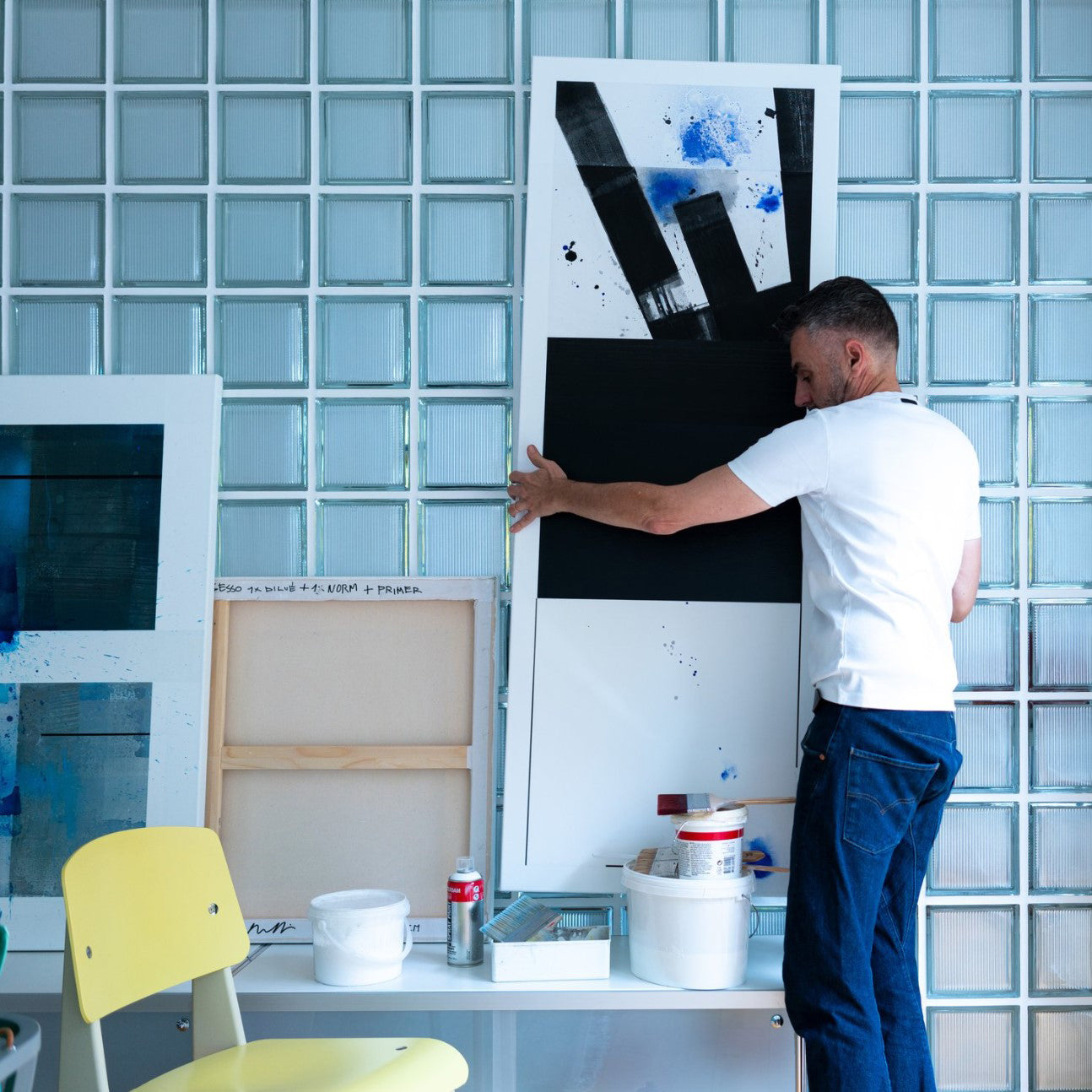Patrick Piccinelli (1959) was born in Switzerland, he works and lives in Autavaux, Switzerland . His pictorial works explore the visual dialogue between notions of structure and randomness in the search for a balance between minimalism and expressionism. He « parasitizes » with relish his minimal paintings. He is a graduate of the University Of Art and Design, Lausanne, Switzerland (ECAL), where he worked particularly with Jean Otth and Pierre Chevalley. His works have recently been acquired by collectors in the United States, Japan, Taïwan, Australia and Switzerland. How did you get into art?
How did you get into art?
I used to draw a lot as a child, more than the average child. It became clear to me very early on that visual language was my preferred means of expression and communication!
When I was 13, I saw a fascinating documentary about Robert Motherwell. I was literally fascinated by this artist. In the documentary, Motherwell created a monumental painting on a huge canvas laid out on the floor of his studio, based on a tiny sketch (Elegy to the Spanish Republic).
I only saw this documentary once, but I still remember it vividly. When I saw this artist working in his studio, I knew I wanted to follow in his footsteps, become an artist and develop my own artistic process.
How would you describe your style? What makes your work special?
I explore the aesthetic codes of minimalism to create highly structured, uncluttered paintings. Geometric composition is always the starting point of the process. When I'm satisfied with the composition from a formal and chromatic point of view, I begin the work of "disruption", which aims to create a fertile visual dialogue between order and disorder. This is when I paint with random brushstrokes, splashes and stains (an intervention akin to informal art).
This creative process is akin to jazz. Geometric composition is like the rhythm that organizes the structure of music with precision and rigor. Traces, writings and splashes are like the outpouring of a pianist's or saxophonist's improvisations. How do you go about developing your work?
How do you go about developing your work?
My creative process is constantly "in motion". It's the act of painting that motivates me, and I couldn't possibly repeat a modus operandi over a long period of time. You could say that my style evolves as my pictorial research and experimentation progress.
 Who or what influences you?
Who or what influences you?
I grew up in Switzerland and studied at the ECAL (University of Art and Design, Lausanne, Switzerland). ECAL is an internationally renowned art school. Switzerland is renowned for its excellence in typography. I was influenced by Swiss graphic design, which is sober, minimal and elegant. I was also influenced by the "Zürich movement" with artists such as Max Bill, Richard Paul Lohse and Verena Loewenberg, pioneers of geometric art (or constructed art). This geometric minimalism can be found in my painting, which is my Swiss culture of rigor and precision.
My biggest artistic influences are : Max Bill, Helmut Federle, Donald Judd, Robert Motherwell, Pierre Soulages, jazz from 70s to today.
Make us curious. What are you planning to do next?
For a long time, my work was acquired exclusively by Swiss collectors. But in recent years, American, Japanese, Australian and Taiwanese collectors have bought paintings from me.
I would therefore like to increase the promotion and of my artistic production on an international level.
As far as my creative research is concerned, my ideal in the future is to create ever stronger visual and metaphorical works, while evolving towards even more minimal compositions...expressing much with less. Learn more about the artist:
Learn more about the artist:


